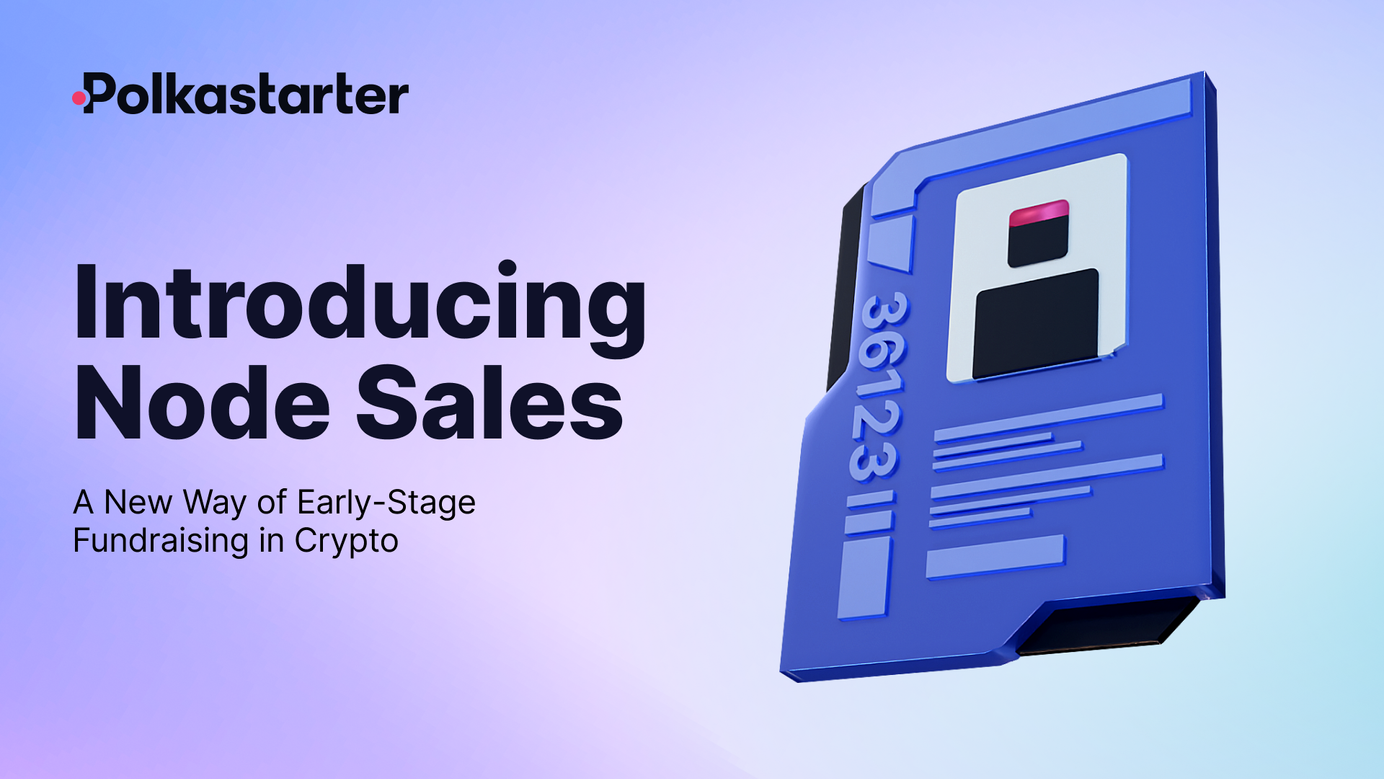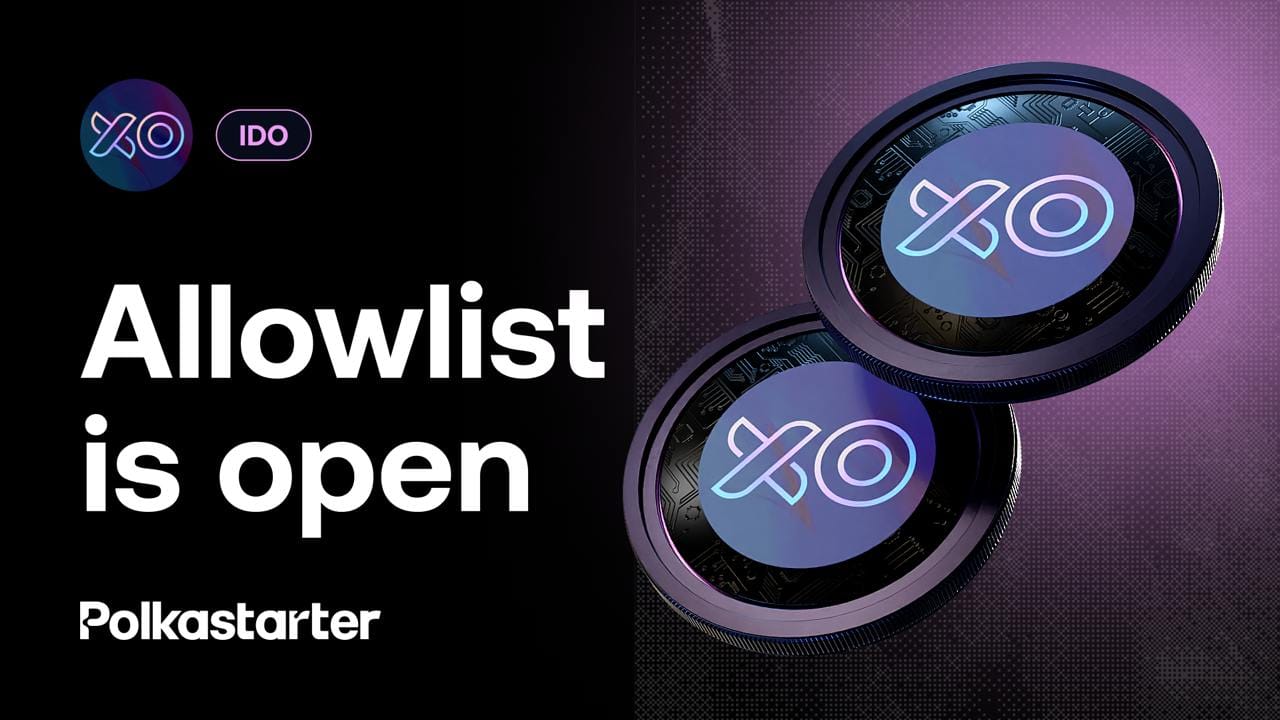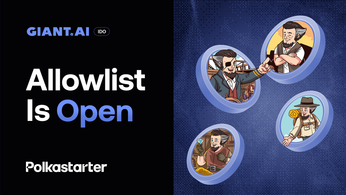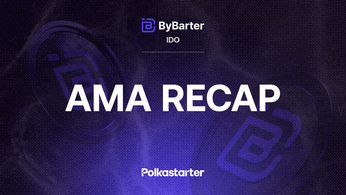
Introducing Node Sales: A New Way of Early-Stage Fundraising in Crypto
The novel opportunity in the ever-evolving web3 fundraising space
A lot has been said about the crypto space, but one thing is true for sure: it's never boring. As the industry evolves, so does the way of building, marketing, networking, scamming (well), and.. raising capital.
We touched upon the evolution of early-stage fundraising here and shared the retrospection of token pre-mines and fair token launches, from Bitcoin till now, here.
Now, it’s time for a trailer: This cycle… A new opportunity has arisen… From the depths of the web3 fundraising stack, The Node Sale.
What are node sales?
Let’s start with a quick recap: a node is a computer connected to a blockchain that helps maintain the network's integrity and security by providing computing power and performing computations.

The computations performed by the nodes vary between networks and may include transaction validation or consensus participation, like proof-of-work (e.g. Bitcoin), proof-of-stake (e.g. Ethereum), or others.
Why are users interested in joining and running a node? The motives vary, from contributing to network decentralisation, security, and governance, to potentially profiting from network transactions through rewards like transaction fees and mining incentives.
Initially, nodes were primarily run by network builders and early adopters. Setting up and operating nodes typically requires technical knowledge, which poses a barrier for some. As a result, companies have begun offering to delegate node operations and issuing fractional shares in nodes, requiring only an initial cash investment from users eager to jump in. With a lower entry barrier, distributing nodes to those interested is a logical next step.
Node sales involve selling blockchain nodes directly to the community – a process that brings in quick cash while giving projects an easy path to decentralisation. Users can purchase node licences, typically an NFT, that they need to hodl to be able to set up the nodes later on. Depending on the project’s strategy, such NFTs may not be tradable for some time.
After the sale is complete and licences are distributed, users need to set up their nodes. This process can also be delegated. Many projects running the node sales allow for the node services to be completely handed over, offering dedicated delegation options. Once done with the node setup, node operators run the nodes and earn rewards specifically designated for them.
Although the concept of selling nodes existed for a while already, the interest in node sales seems to have surged recently. That being said, it’s still a relatively new phenomenon in the fast-moving crypto space. Let’s see some of the recent and most prominent examples:
- Example 1: Aethir - first broadly successful decentralised node sale
One of the most known node sales so far. Over 65,000 Checker Node licenses were sold, valued at over 29,000 ETH, and consolidating 20,000 buyers, which accounts for a successful decentralisation of the Aethir that’s building a scalable decentralised cloud infrastructure (DCI) for Gaming & AI. - Example 2: XAI - 50,000 nodes sold in December 2023.
XAI is a Layer 3 gaming solution on Arbitrum that managed to successfully sell the nodes to investors. The starting price for nodes was set at $300, with prices increasing as the levels progressed. XAI token is utilised for gas, with a bit over 50% of the tokens set for the community and node operators.
However, it’s worth pointing out that this strategy should not be taken for granted. It risks centralising control if very few entities acquire a large number of nodes. Here, the involvement of fundraising platforms like Polkastarter comes in handy. Read more about centralisation concerns here.
In principle, node sales make participation more accessible and can be seen by some as an investment opportunity. However, node sales come with risks, including market volatility and potential regulatory challenges, such as compliance with securities laws or tax obligations. It’s crucial to explore those challenges deeply before taking any further steps.
How to evaluate a node sales?
The node sales model resembles this of the token sales. Both come with different prices per node/token offered in different tiers/funding rounds. However, the vesting for the node sales is usually longer, cliffs are common, and a bigger portion of the ‘supply’ is offered directly to the community, an equivalent of the public sale round. Commonly, a part of the token reward pool is specifically reserved for the node operators.
Typically, node sales differ from token sales by:
- Higher valuations
- Lower dilution
- Bigger fundraising amounts
- Lower initial and higher subsequent selling pressure
To accurately evaluate the node sales takes work. It's crucial to carefully calculate the stages (tiers) as higher tiers may have significantly lower (if any) return rates. It’s worth pointing out that in this model, the more users join buying more nodes, the lower the rewards. You can read more about evaluating node sales here.
Despite the seemingly good idea, node sales come with many uncertainties regarding the market, projects, and further adoption. Are node sales to be trusted or is it just the next money grab of crypto? It’s always tempting to ask these questions, and we cannot blame you for that. The “boring” answer you may say, but it’s as true as always: it depends and requires deeper research, case by case.
How does Polkastarter help?
At Polkastarter, we do our due diligence to select the most promising projects for our community, so you don’t have to start from scratch.
Soon, you’ll have the opportunity to experiment with and test the node sales for yourself… Get ready for the CARV node sale, which is about to take off this May. 👀
CARV is a modular data layer for Gaming and AI, with a commitment to a decentralised, user-owned internet. To participate in the data economy, CARV offers lightweight verifier nodes to be managed by the community. The community you will be able to join soon…
Excited as we are? Stay tuned for further details and start your DYOR today 🫡
About Polkastarter
Polkastarter is the leading early-stage fundraising protocol, enabling web3’s most innovative projects to kick-start their journey and grow their communities. Polkastarter allows its users to make research-based decisions to participate in high-potential public sales and be early to the future of web3.
Website | X | Discord | Telegram | Telegram Announcements | YouTube
Disclaimer: This material should not be treated as financial advice. Cryptocurrency prices are subject to high market risk and volatility, and node sales are especially tough to estimate. You should only invest in products that you are familiar with and where you understand the associated risks. The content expressed in this blog and any Polkastarter materials is not intended to be taken for granted. You should carefully consider your investment experience, financial situation, investment objectives, and risk tolerance. We suggest consulting an independent financial adviser before making any financial decision. Past performance is not a reliable indicator of future performance. The value of your investment can go down as well as up, and you may not get back the amount you invested. You are solely responsible for your investment decisions. Polkastarter is not responsible for any losses you may incur.
Polkastarter Blog - Latest Polkastarter News & Updates Newsletter
Join the newsletter to receive the latest updates in your inbox.





